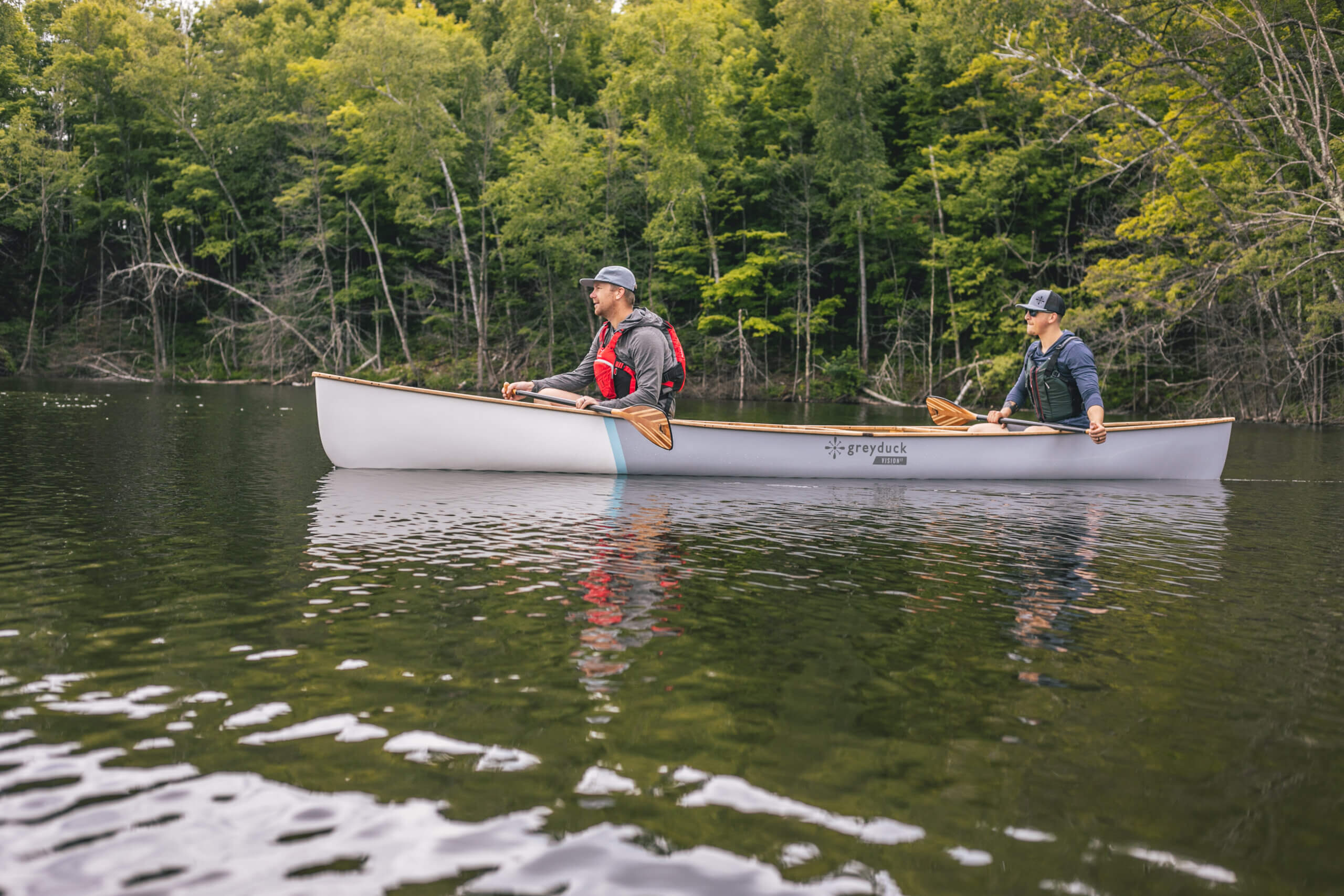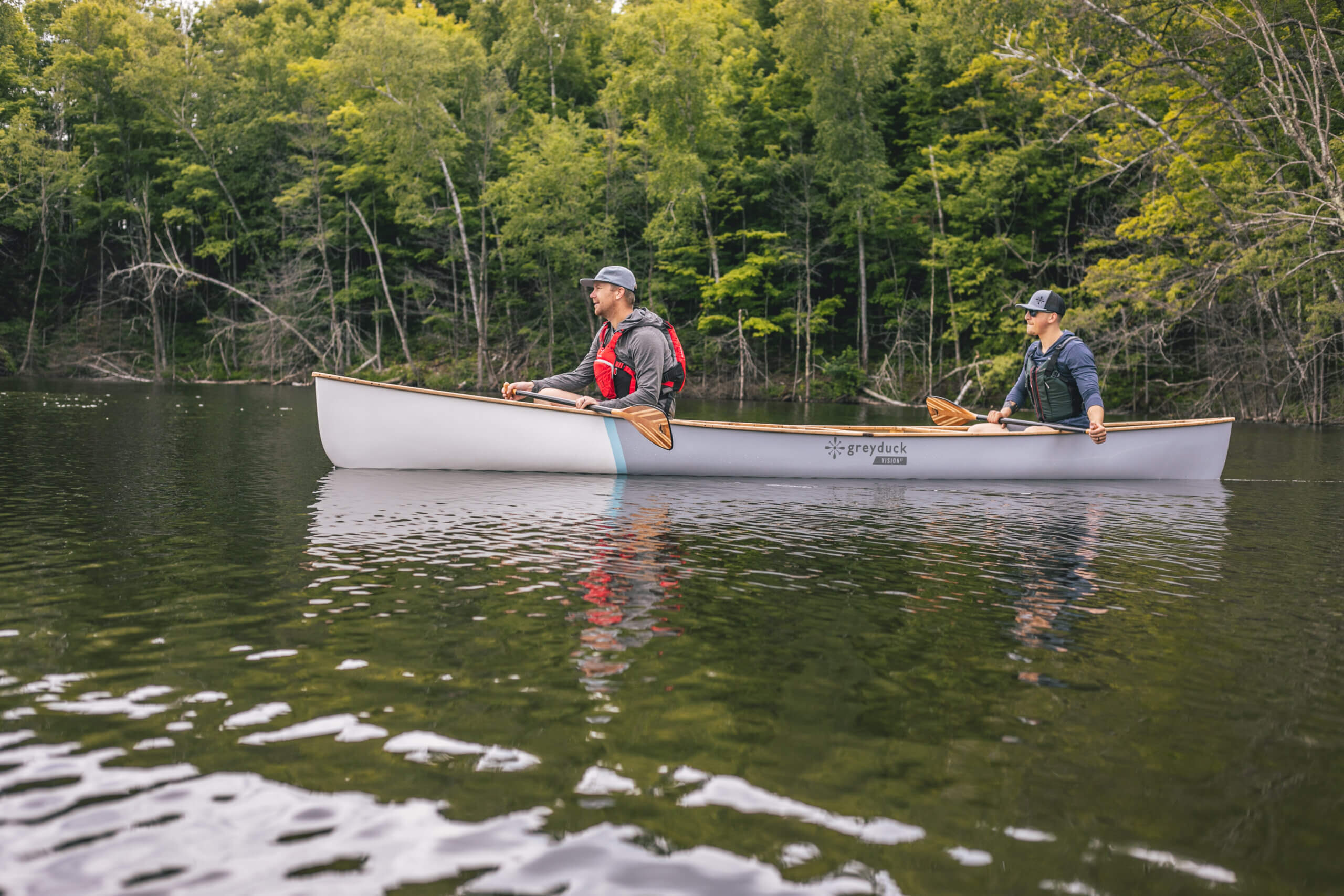We’re approaching the autumn of 2022, a full two and a half years since the start of the COVID pandemic. Firmly sitting at the tail end of the bullwhip, US industry has survived the supply chain suffering – only to now be faced with full warehouses and diminishing demand. The roller coaster ride continues to be wild. It is pushing businesses to reflect on what could have been done differently: We have realized our supply chains are fragile, our businesses less durable than we had thought, and that perhaps we have over-specialized. In light of this, it has become not only prudent but also necessary to consider what we may want to do differently moving forward.
As the owner of Grey Duck Outdoor, a Minneapolis-based outdoor recreation company, I am one year into onshoring production. I’m therefore one year into recognizing how difficult this process can be, but also how much potential it offers in the long run.
In the circles of small business owners I’ve interacted with, one possibility being considered more and more seriously to address these issues is that of on-shoring or reshoring. As the owner of Grey Duck Outdoor, a Minneapolis-based outdoor recreation company, I am one year into trying exactly that. I’m therefore one year into recognizing how difficult this process can be, but also how much potential it offers in the long run. And I’m evidence that this process of rethinking supply chains is possible, is possible even for a small business in a relatively niche field, and is an effort that not only US equity holders but also US consumers can actively support.
In 2020, Grey Duck Outdoor’s business was entirely focused on the stand-up paddleboard (SUP) market. We designed our boards here in the US but manufactured all of our products in China. My relationship with suppliers there has been very positive, to the point where I would call many of them friends. I’ve traveled to China to build business relationships and collaborate on ensuring our products were made the way we intended. My experiences there were always good ones.
Despite our close relationships with partners in China, 2020 and 2021 were extremely challenging. While demand for outdoor products surged, raw materials in China became difficult to obtain. As a result, production and shipping times ballooned while ocean freight pricing soared. We simply couldn’t keep up. Demand was strong but margins were shrinking as we ate more freight costs and left revenue on the table by not meeting overall demand.
As we entered 2022, things began to normalize. But then a new kind of threat reared its head: Russia invaded Ukraine and the West decided that Moscow’s actions deserved quick and substantial punishment. Geopolitical risk for businesses, which has of course always existed, suddenly became more evident, and concrete. Companies doing business in Russia, Ukraine, and surrounding areas remain materially impacted.
Simply put, the world we knew five years ago no longer exists. It’s time to create a more durable economy. As business owners, that involves making decisions that will hurt in the short run with hopes of a payoff down the road. For consumers, that means making more thoughtful purchase decisions and looking beyond the price tag.
As a small business sitting in Minnesota, geopolitical risk has up to this point been far down on the list of possible threats, relatively speaking. But after two years of seeing the low probability risk of global pandemic dramatically impact our business, no threat gets to be ignored. What would happen if China invaded Taiwan? Or if tensions between the US and China bubbled over and one side resorted to outright economic warfare? Our business model depends on an amicable relationship between the US and China; it was time to question whether our eggs were too much in the China basket.
Simply put, the world we knew five years ago no longer exists. It’s time to create a more durable economy. As business owners, that involves making decisions that will hurt in the short run with hopes of a payoff down the road. For consumers, that means making more thoughtful purchase decisions and looking beyond the price tag.
At Grey Duck Outdoor, we’ve taken the step of adding a new product to our offering – canoes. We started small, partnering in 2021 with a canoe manufacturer out of Quebec, Canada that was willing to collaborate and co-brand canoes with us. That work created an opening in the market for us to be seen as more than a SUP company. People asked questions about the new line, and I was approached by a seasoned canoe builder who asked if I needed help with that side of the business. Those initial discussions created the space for us to think larger and ask a potentially game-changing question: Should we be building canoes here?
The answer, after much consideration, was yes. It likely would have been a different one five years ago – then, we might not even have asked the question. But it was time to take greater control of our destiny. The decision was not made lightly and has involved considerable investment of time and treasure to make our first model of canoe. We’ve made mistakes, it’s taken longer than expected, and we’re still not where we want to be. I’ve said to myself more than a few times, “This is why everything is made in China.” We’re trying to use muscles our business has never had to use before, and it’s been painfully apparent.
But through this experience of mistakes, setbacks, and expense, we’ve also gained experience, improved our resilience, and are building core competencies in composites that go beyond canoe making. Those core competencies are foundational in our ability to slowly grow our domestically produced product line over time. Through these efforts, we’re also providing income to other domestic suppliers of resins, cloth, and supplies required to build our products. As theses small efforts compound over time, raw material components needed for domestic manufacturing will become more readily available and be more plentiful, creating an ecosystem that will allow local manufacturers to be faster reacting, more durable, and more profitable.
We’ve spent decades offshoring our manufacturing and we know the pendulum has swung too far. If the US wants more local manufacturing, equity holders must explicitly express that desire and give business leaders the green light on exchanging short term profits for long term business durability.
There are a lot of equity holders and consumers who say they believe in domestic manufacturing, but only time will tell whether they’re willing to put their money where their mouth is. Until this happens, the US will remain exposed to risks that we knowingly can mitigate.
In the meantime, Grey Duck Outdoor is working to ensure that, at least in our outdoor recreation niche, the US has industrial resilience and new production competencies.
Rob Bossen is an avid outdoor enthusiast and owner of Grey Duck Outdoor. He lives in Minneapolis with his wife, two daughters, and goldendoodle. Discover more about Grey Duck Outdoor on their website.
(Photo by Emily Hedricks, Grey Duck Outdoor)




